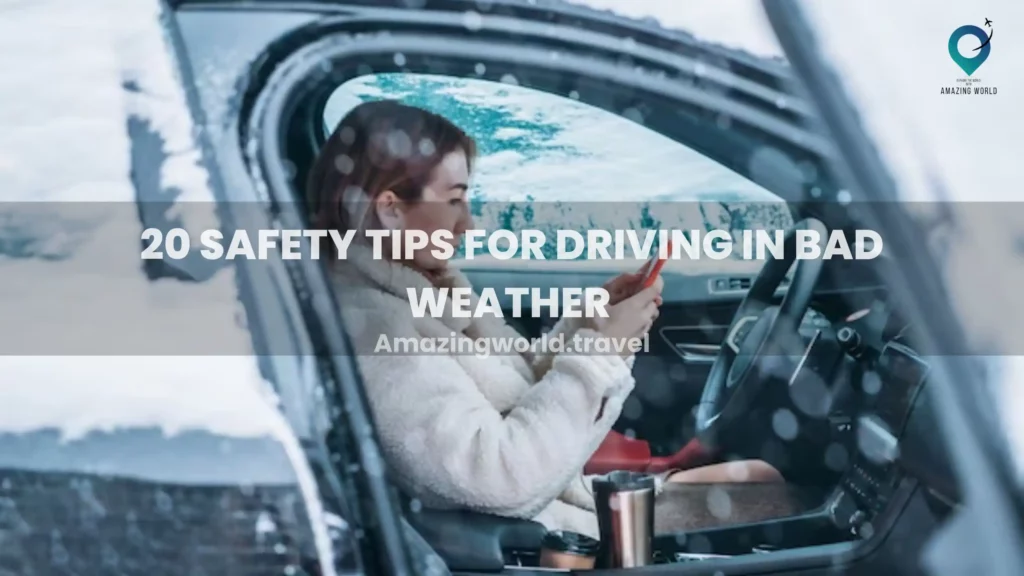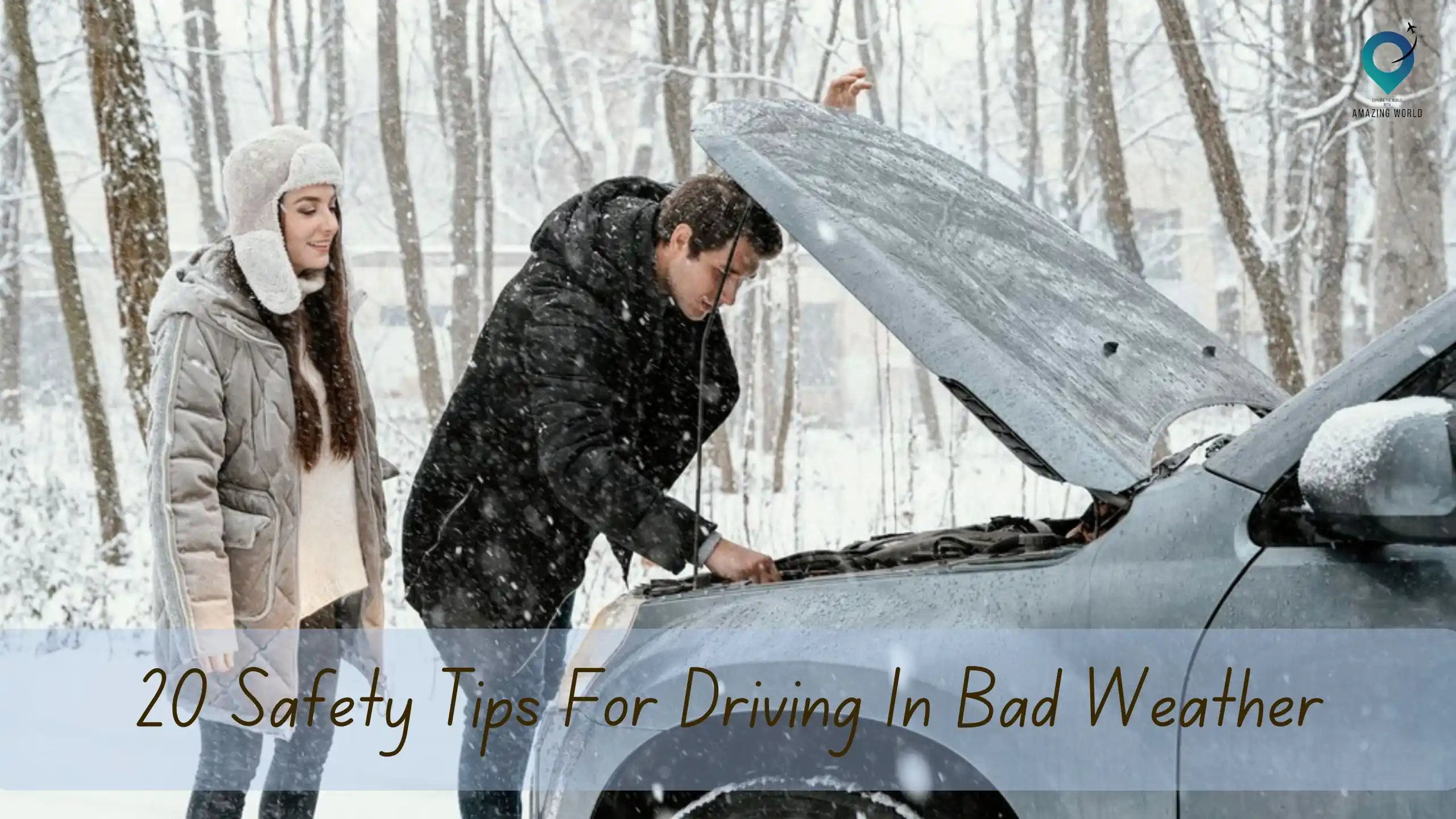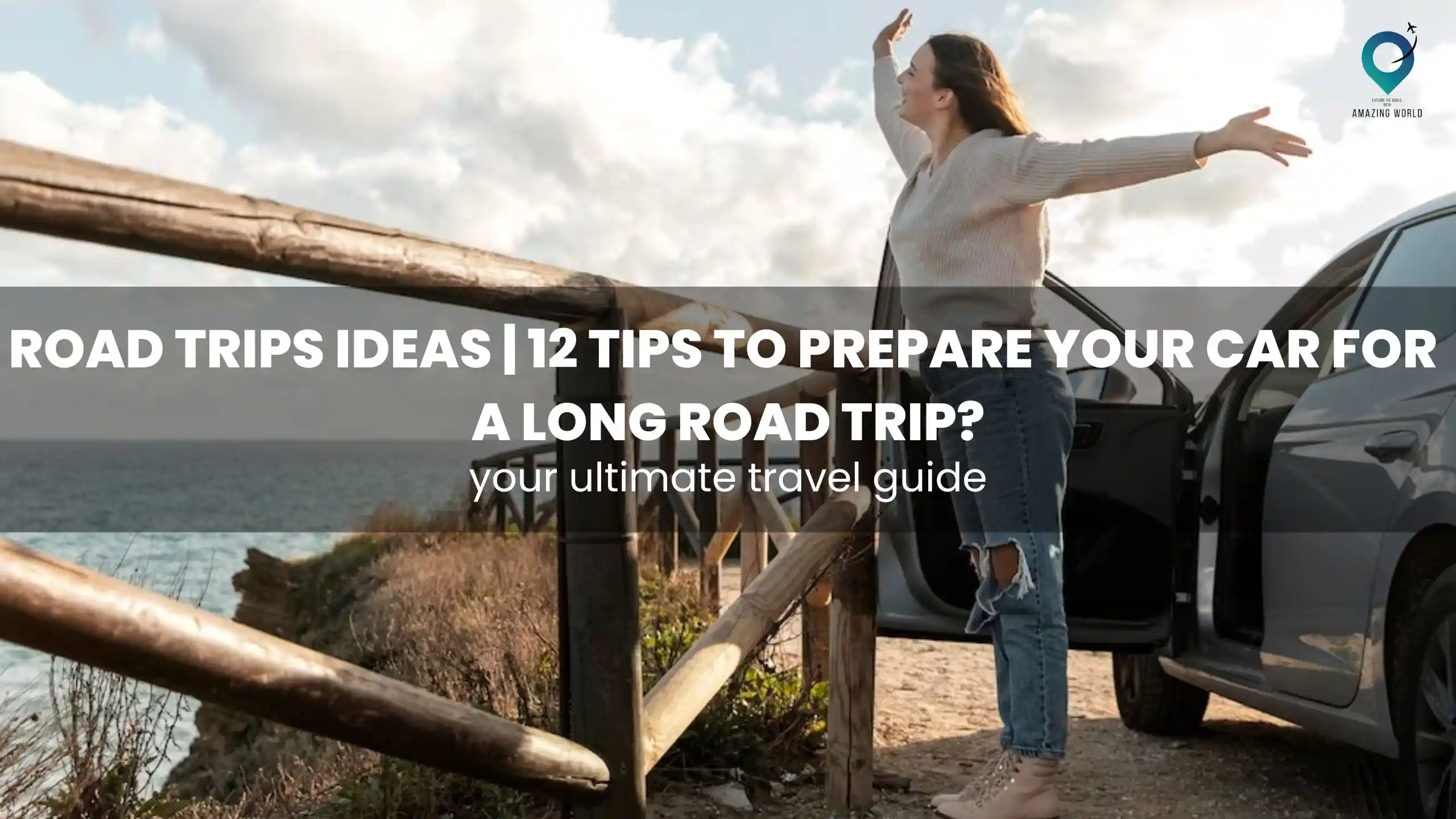20 Safety Tips For Driving In Bad Weather

Planning a road trip can be an exhilarating experience, filled with anticipation and the promise of adventure. However, one thing that can quickly turn a joyous journey into a treacherous ordeal is encountering bad weather along the way. Whether it’s heavy rain, snowstorms, or fog, adverse weather conditions can significantly impact road safety.
In this article, we will explore essential tips and strategies to ensure your road trip remains safe and enjoyable, even in the face of challenging weather conditions.
1. Check Weather Forecasts Frequently
Before you hit the road, take the time to check the weather forecasts along your planned route. This will give you a good idea of what to expect and help you make informed decisions about when and where to travel. Utilize reliable weather apps or websites to stay updated on current conditions and any potential weather alerts.
2. Plan for Extra Travel Time
Adverse weather conditions can slow down your journey, so it’s crucial to factor in extra travel time. Leave earlier than you typically would account for potential delays caused by inclement weather. By allowing yourself a buffer, you can reduce stress and ensure a safer and more enjoyable road trip experience.
3. Maintain Your Vehicle
Before embarking on your road trip, ensure your vehicle is in top condition. Regularly check the tire pressure, oil levels, brake pads, and other essential components. Adequate maintenance will help minimize the chances of mechanical issues during your journey, especially when driving through challenging weather conditions.
4. Pack an Emergency Kit
Prepare a well-stocked emergency kit to carry in your vehicle. This kit should include essential items such as a first aid kit, flashlight, blankets, bottled water, non-perishable food, and a fully charged power bank. In the event of unexpected delays or getting stranded due to severe weather, your emergency kit will provide vital supplies and help keep you safe.
5. Adjust Your Driving Speed
When facing challenging weather conditions, adjust your driving speed accordingly. Slow down and maintain a safe distance from the vehicle ahead to allow for better control and reaction time. Adhering to speed limits and adjusting your speed based on road conditions will reduce the risk of accidents and hydroplaning.
6. Be Mindful of Hydroplaning
One of the hazards posed by heavy rain is the risk of hydroplaning. This occurs when a layer of water builds up between the tires of your vehicle and the road surface, resulting in reduced traction. To avoid hydroplaning, drive in the tracks of the vehicle ahead, avoid sudden maneuvers, and refrain from slamming on the brakes.
7. Be Cautious in Foggy Conditions
Foggy conditions can significantly reduce visibility on the road, making it challenging to navigate. When encountering fog, drive with caution and use low-beam headlights or fog lights to improve visibility. Reduce your speed, maintain a safe following distance, and listen for any fog-related warnings or advisories on the radio.
8. Stay Updated on Road Conditions
In addition to checking weather forecasts, it’s essential to stay updated on road conditions, especially during challenging weather. Road closures, detours, or hazardous areas can impact your journey. Use navigation apps or check online resources that provide real-time information on road conditions, construction zones, and traffic updates.
9. Take Breaks and Stay Alert
Long road trips can be tiring, and challenging weather conditions can add to the fatigue. It’s crucial to take regular breaks, stretch your legs, and stay alert behind the wheel. If you feel drowsy or fatigued, find a safe place to pull over and rest. Remember, your safety and the safety of others on the road should always be a priority.
10. Secure Loose Items
When facing strong winds or turbulent weather conditions, ensure that all loose items in your vehicle are properly secured. Loose objects can become dangerous projectiles in the event of sudden stops, swerves, or strong gusts of wind. Secure luggage, camping gear, and any other items to prevent them from shifting or flying around while you’re on the road.
11. Use Wipers and Defrosters
Rain, sleet, or snow can obstruct your visibility, making it essential to have properly functioning windshield wipers and defrosters. Replace worn-out wiper blades before your trip and ensure that your defrosters are working efficiently. Clear visibility is crucial for safe driving in challenging weather conditions.
12. Avoid Unnecessary Risks
When faced with severe weather conditions, it’s essential to prioritize your safety and make wise decisions. Avoid unnecessary risks such as driving through flooded areas, crossing unstable bridges, or venturing into unknown terrain during challenging weather. Use your judgment and consider alternate routes or delaying your trip if necessary.
13. Share Your Itinerary
Before embarking on your road trip, share your itinerary with a trusted friend or family member. Provide them with details of your planned route, estimated travel time, and contact information. This way, someone will know your whereabouts in case of any unforeseen circumstances or emergencies.
14. Stay Calm and Be Patient
Challenging weather conditions can lead to unexpected delays and road closures. It’s important to remain calm and patient when faced with these situations. Getting frustrated or anxious will not change the circumstances but may affect your ability to make clear decisions. Take a deep breath, adapt to the situation, and remember that safety should always come first.
15. Seek Shelter During Severe Weather
In the event of severe weather conditions, such as thunderstorms, hurricanes, or tornadoes, it’s crucial to seek appropriate shelter. Find a sturdy building or a designated storm shelter to protect yourself from potential harm. Avoid parking under trees or near power lines that may pose a safety risk during strong winds.
16. Monitor Roadside Assistance Services
Before your road trip, familiarize yourself with available roadside assistance services in the areas you’ll be traveling through. Note down their contact information and keep it easily accessible. In the event of a breakdown or any other vehicle-related issues during challenging weather conditions, you’ll be prepared to seek assistance promptly.
17. Know When to Postpone or Cancel
While a road trip can be an exciting adventure, it’s crucial to know when to postpone or cancel your plans due to extreme weather conditions. Your safety should always be the top priority. If weather forecasts predict severe storms, blizzards, or other dangerous situations, consider rescheduling your trip to a more suitable time.
18. Be Prepared for Winter Weather
If you’re planning a road trip during winter, it’s essential to be prepared for cold weather conditions. Pack warm clothing, extra blankets, and necessary winter gear such as ice scrapers, snow brushes, and traction aids like sand or kitty litter. It’s also wise to keep an emergency supply of food and water in case you get stranded in a snowstorm.
19. Stay Informed About Wildfires
If you’re traveling through areas prone to wildfires, stay informed about fire conditions and follow any evacuation orders or warnings issued by local authorities. Monitor news updates and wildfire information websites to ensure you’re aware of any fire-related risks along your route.
20. Maintain a Positive Attitude
Lastly, maintaining a positive attitude during challenging weather conditions can make a significant difference in your road trip experience. While adverse weather may alter your plans or create some inconveniences, embracing the journey with a positive mindset will help you overcome any obstacles and enjoy the adventure despite the weather challenges.
Conclusion
Road trip safety is of utmost importance, especially when navigating challenging weather conditions. You can ensure a safer and more enjoyable journey by following these essential tips, checking weather forecasts, adjusting your driving habits, and being prepared with the right equipment and information. Remember to prioritize your safety, stay informed, and adapt to the changing conditions. With proper preparation and caution, you’ll be ready to face any weather-related challenges that come your way and make unforgettable memories on your road trip adventure.
How much did you like Our detailed The Best Audiobooks to Listen to On Your Road Trip? Review Also, please share these Blogs with your friends on social media.
Related Article –

Meet David Hoper, a passionate travel Blog writer with 7+ years of experience in travel content. Through his exemplary storytelling and engaging narratives, he shares his experiences and brings destinations to life. With a keen eye for detail and a love for exploration, he has cultivated a diverse portfolio of travel blogs that inspire and inform readers worldwide.







